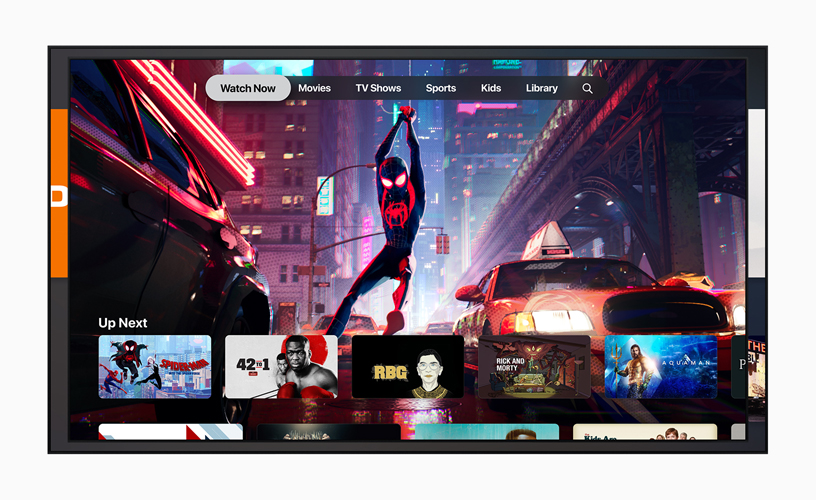Apple Unveils Apple TV+
CUPERTINO, Calif.—Apple has announced the launch of Apple TV+, a new streaming service featuring TV, films and original content on demand.
So why now? Michail Chandakas, analyst at Kagan, a media research group within the TMT offering of S&P Global Market Intelligence, points toward declining hardware sales: “Apple is pursuing a more diverse consumer approach with the Apple TV and Apple 4K TV streaming devices that aggregate a number of OTT services, much like Roku and Amazon channels, through Apple ID or directly through the available SVoD services.”
“Services is a revenue stream that has been growing strongly for Apple,” adds Toby Holleran, senior analyst at Ampere Analysis. “It already offers a Cloud storage service, a music service and in some markets a subscription plan for iPhones that ensure prompt upgrades."
“Launching a video service is another product to add to its services portfolio, especially as consumers are spending more and more time watching video through online video services,” he continues. “By offering multiple services, Apple puts itself in a position to provide a single-fee multiple service offering, which will keep its users within the Apple ecosystem.”
Apple also benefits from a ready-made audience who are famously flush with their cash when it comes to entertainment. “For Apple, an already established 1.3 billion active user base gives it a head start in terms of distribution—compare that to Spotify’s 100 million and Netflix 139 million at end-2018,” notes Chandakas.
“Factor in Apple’s new partnership with Samsung confirmed earlier this year, placing an exclusive iTunes content app on the South Korean manufacturer’s TVs, and it has a solid base to build on,” adds David Sidebottom, principal analyst and Futuresource Consulting.

Holleran predicts that Apple will initially target consumers already within their ecosystem, using Apple Music as a test bed for whether users will sign up: “Among those responding to our consumer survey in 20 markets worldwide, almost 90 percent of Apple Music subscribers own an iPhone, while 95 percent own at least one Apple product.
Get the TV Tech Newsletter
The professional video industry's #1 source for news, trends and product and tech information. Sign up below.
“Thus, existing Apple device owners (especially those subscribing to other Apple services) are the best addressable market for a video streaming service. Additionally, both Apple Music subscribers and Apple device owners have a high engagement with online video services,” he explains.
However, not even a company as wealthy as Apple can afford to be complacent in an SVoD market dominated by Netflix and Amazon. “As a newcomer to the online video space, Apple is unlikely to cause a dent in the market in the short term,” says Holleran.
“Online video services such as Netflix or Amazon will definitely keep an eye on a company with one of the largest cash reserves in the world, but there will be teething issues for Apple’s service, not least of which could be the limited availability of content,” he continues. “Studios appear to be more focused on launching services of their own rather than licensing their content out, while Netflix and Amazon often secure multi-year contracts for the content they license.”
Sidebottom agrees: “Apple will be nothing without the necessary content markers. Even with its well-entrenched fan base, a strong and wide content offering will be needed from day one. Comparisons with Netflix’s content will be inevitable, and Apple will require a powerful portfolio to attract and retain subscribers. They’ll need to plan continued forays into exclusive or original content, but given Apple’s likely key subscriber demographic, these customers will be taking Apple as an additional service, rather than cannibalizing their existing video subscriptions.”
The rise in SVoD “stacking” is therefore expected to limit Apple TV+’s impact on Netflix and Amazon Prime Video. “Futuresource research shows there’s a continuing customer acceptance of multiple subscriptions,” explains Sidebottom. “In the U.S.A., there are nearly 80 million households with SVoD services, and on average each of these households takes two services.” In Europe too, more than half of SVoD consumers subscribe to two or more services.
“Our research suggests that this will trend towards three subscriptions in the coming years, although this will be marginally lower in Europe,” Sidebottom continues. “However, the sheer number of SVoD services available could see consumers become more comfortable with trial memberships and special offers, dipping in for short periods and then cancelling subscriptions as they become increasingly aware of the number of services they are taking.”
Disney+ is also expected to launch this year, as well as streaming service plans by WarnerMedia, which Chandakas expects to impact Netflix and Prime Video: “The new services should put a pressure on the growth of most subscription OTT/SVoD services in Europe during the next one to two years, but that time scale is too short for any major changes.
“The total SVoD revenues will keep growing as a proportion of the total spending that goes to subscription video services (multichannel and OTT) due to the increase of the overall number of available services. We expect the top two services, Netflix and Prime Video, by subscribers and revenues to experience lower shares compared to 2018,” he concludes.
